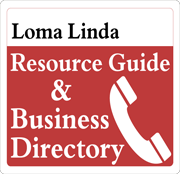President W. A. Ruble addressed the Board of Trustees on March 31, 1911. He announced that beginning September 29, 1910, the second session of the College of Medical Evangelists (CME) included 29 freshman and 11 sophomore students. They came from 14 states and four foreign countries: Wisconsin, California, Illinois, New York, Oregon, Indiana, Washington, Washington DC, South Dakota, Nebraska, Ohio, Colorado, Montana, Kansas, Minnesota, Canada, Germany, Switzerland, and Australia. He also reported excellent attendance.
The College of Medical Evangelists served a total of 175 students, including 57 children enrolled in the church school. In addition to the 40 medical students, the institution had 78 nursing students, 47 in the first three classes, and 31 special students who were taking additional coursework.
At the time, only 22 students paid all their way in cash. Most of the college students earned their room and board by working on campus. Because half of the medical students had a balance totaling $1,072.76, Ruble recommended that the Committee on Plans consider starting a student assistance fund for worthy students.
Dr. Ruble reported that the new dormitory had temporarily relieved crowded living conditions for women. Unfortunately, living facilities for men students were still seriously overcrowded. Another basic shortcoming was the noisy, overpopulated dining room for helpers (the word used to identify regular employees): “With the growth of the institution, and the arrival of more students next fall, it will be utterly impossible to provide in our present dining room for the numbers that will be in attendance.”
At times, the makeshift arrangements and odd partnerships bordered on the bizarre. Deficient laboratory and classroom facilities served 30 classes daily. Twenty-five chemistry students crowded a 15 by 40-foot laboratory. A second laboratory measuring 15 by 18 feet supported other classes. The Chapel and Assembly Hall provided additional classroom space. The College taught anatomy in a dissecting laboratory over a bakery in Colton.
Ruble’s recommendations? A new laboratory should be built immediately. Then a men’s dormitory. Above all, a new hospital to provide clinical experience was essential. Indeed, the Sanitarium regularly turned away 20 to 25 patients at one time for lack of accommodations.
On a more cheerful note, President Ruble delivered a good report on the acquisition of teaching equipment, including 33 new microscopes from Germany, “a projecting apparatus which will throw on the screen illustrations from any book,” and an apparatus for projecting microscopical and lantern slides. Ruble clearly foresaw faculty needs. Although the institution employed four full-time and four part-time physicians, “it is quite evident that it will take an average of two physicians for each year’s work carried in the medical school.” The President concluded with an optimistic outlook for the future: “The work the students have done, and their enthusiasm and interest in the school as a whole demonstrates that it is possible for us to conduct as strong a course here as anywhere. Many of our students are corresponding with their young friends and encouraging them to come to Loma Linda for their medical course. Correspondence already in hand indicates that we shall probably have a larger class next year than we had at the beginning of this year.”
Finally, Ruble declared that profound gratitude could be their only response. God blessed the school during the year. Goodwill “seems to be manifest by a great majority of our people throughout the field toward this institution.” Ruble thanked the Board for their interest and the presidents of the union conferences for their financial assistance.
To help finance the purchase of equipment and insure the support of its teachers the Board came up with a novel idea. They voted to invite all Seventh-day Adventist sanitariums and treatment rooms to donate a thank offering of 5% of their net income to CME. The vote also asked the General Conference, various Union Conferences, and two local conferences to donate a total of $8,000 or more to the building fund during the year 1911. Also, a soliciting agent should be employed.
To unify and strengthen CME, the Board organized a “Committee on Reference and General Management” to hold meetings once a week. Chaired by the president of the College and composed of department heads, it represented the educational, medical, and business sections of the institution, as well as the Board.
Three physicians were appointed to take post-graduate education courses for three months during the coming summer. This plan illustrates the fact that the Board of Trustees did actually recognize the need for its faculty to keep abreast of current knowledge.
The institution also diversified within the framework of healthful living. On April 12, 1911, the Board of Trustees authorized CME to develop a health food business, including nut foods and canned vegetables.
A major problem had not yet been addressed. What about that 100-bed clinical hospital required by the American Medical Association? True, all of these other activities implemented the continuing efforts of CME. Nonetheless, the most pressing need was to provide facilities for students to obtain more clinical education. The Sanitarium served ambulatory/rehabilitation patients. A hospital would provide facilities to treat bed-ridden patients; those recovering from surgery, those who had serious injuries, or those who suffered from acute illnesses and diseases. In the first move to establish a hospital, on April 18, 1911, the Board voted to move surgery from the Sanitarium to the west rooms on the first floor of the large cottage on the hill; the move was to be completed by November 1, 1911.
To Be Continued…

